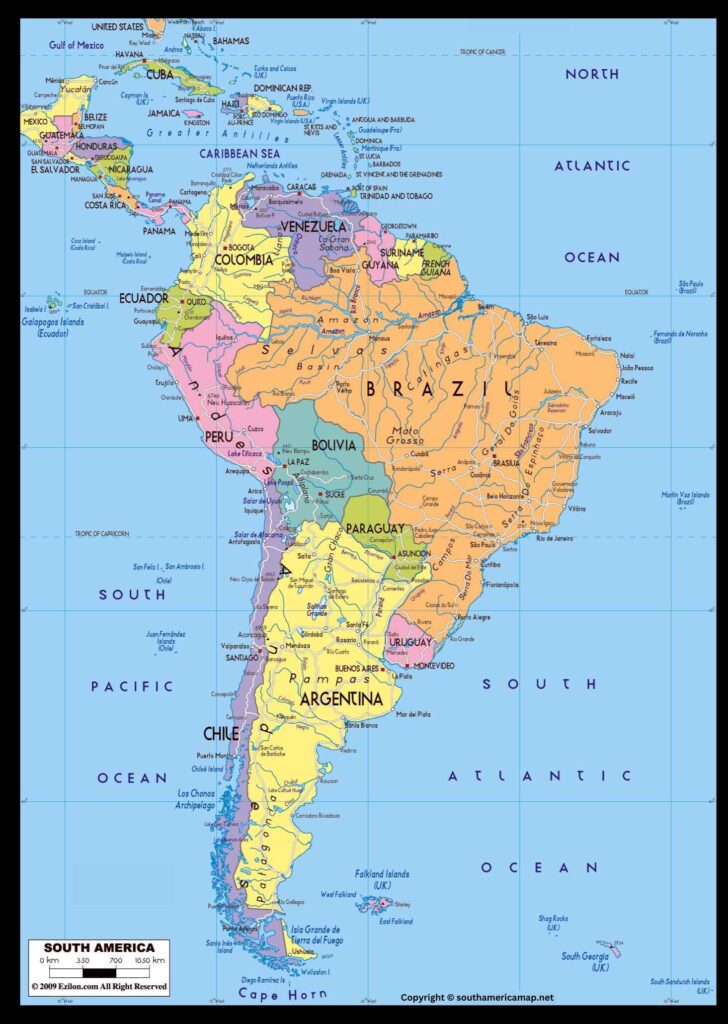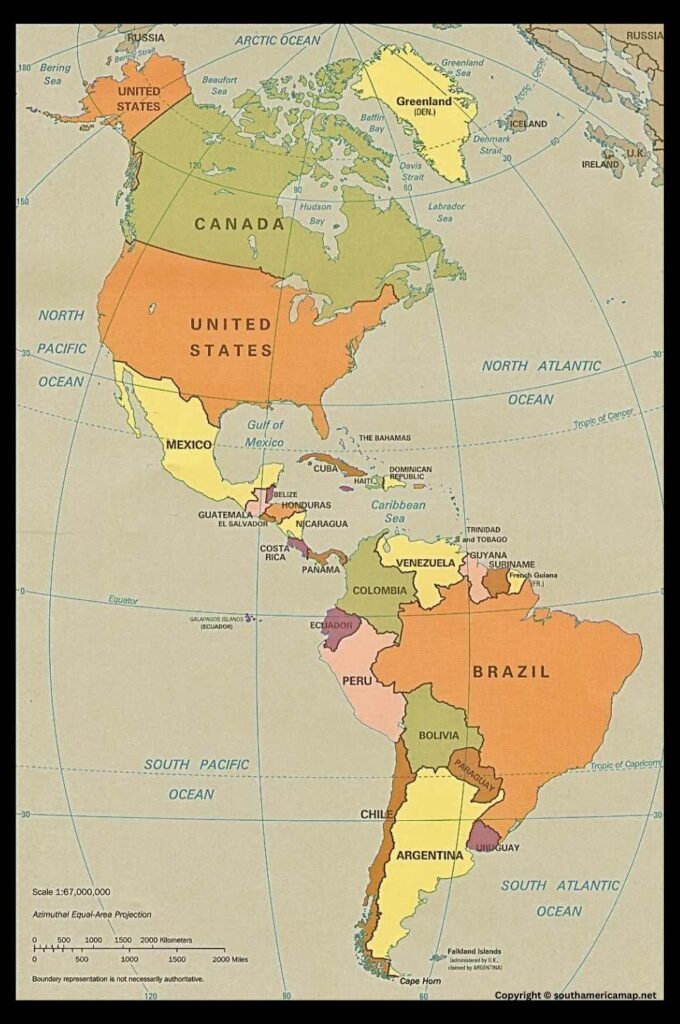A label South America map is used for various types of tasks, to appreciate culture from educational to navigational.
Related Post –
South America Map Labeled
- Geography visual aid learning: A labeled map presents water bodies in the continent, its countries, cities, physical sites (mountains, rivers, deserts, and beyond), and in an easy-to-understand format. There can be great improvement in learning in such visual form, which can make it easier to learn and appreciate geography.
- Understanding interrelations between different regions: MAP labels assist students in respective countries, cities and land facilities for each other, get better understanding of the geography of the continent and how its components are related to each other.
- To enable research and exploration: maps can serve as a basis for research projects at individual countries, regional regions, or natural sites in South America. Students can use maps to identify places of interest, study their history and culture, and map their virtual or real explores.
2. Navigation:
- Planning travel routes: Despite planning a backpacking tour on a cultural tour of Andes or Amazon jungle, a label map can prove to be very helpful in traveling in mapping routes, sites and unfamiliar areas.
- Knowing the distance and transport networks: distance between cities and towns, and primary transport networks such as highways, railway and waterway maps are noted. It is important to know this to create an effective journey program and to greed the details of traveling around the continent.
- Identification of special places: With markers for cities, sites, and natural characteristics, a marked map enables users to identify special places of interest, especially the navigation and exploration of the continent.
3. Cultural appreciation:
- Study of numerous cultures and languages: South America is a multicultural continent wealthy in cultures and languages. A marked map may be a useful tool to take a look at these exceptional population, in which they’re, and how they contributed to the unique cultural background of the continent.
- Learning approximately political and ancient backgrounds: Markers on the map can suggest historic hobbies, quarrels and websites of primary towns, which can function a reference to study political and historical development of various countries in South America.
- Praise for the herbal wonders of the continent: The signs on the map can be named Amazon Rainforest, Andes Mountains, Galapagos Islands and different herbal wonders, which marvel and admire and recognize and recognize the excessive biodiversity of numerous ecosystems and the continent.
In standard, a label map of South America is an effective educational system, navigation resource and cultural admiration resources. It is a visible representation of the continent that may be used to improve learning, enable exploration and promote increasingly information and appreciation for this wealthy and interesting continent.
Labeled Map of North And South America
The Isthmus of Panama divides North and South America, a strip of land linking the two continents. The border’s precise location is not agreed on by everyone, but the most general definition is along the watershed of the Darién Mountains on the Colombia-Panama border.
The following is the division of the boundaries:
North America:
- North: Arctic Ocean
- West: Pacific Ocean
- East: Atlantic Ocean
- South: Isthmus of Panama
- Northwestern limit: Bering Strait, separating it from Asia
South America:
- North: Isthmus of Panama
- West: Pacific Ocean
- East: Atlantic Ocean
- South: Drake Passage, separating it from Antarctica
- Northeastern limit: Caribbean Sea
The Isthmus of Panama, while being quite a small piece of land, is very important in determining the borders of the two continents. It is also geographically and ecologically unique in that it makes a bridge between the Americas and provides a specific biodiverse region.

